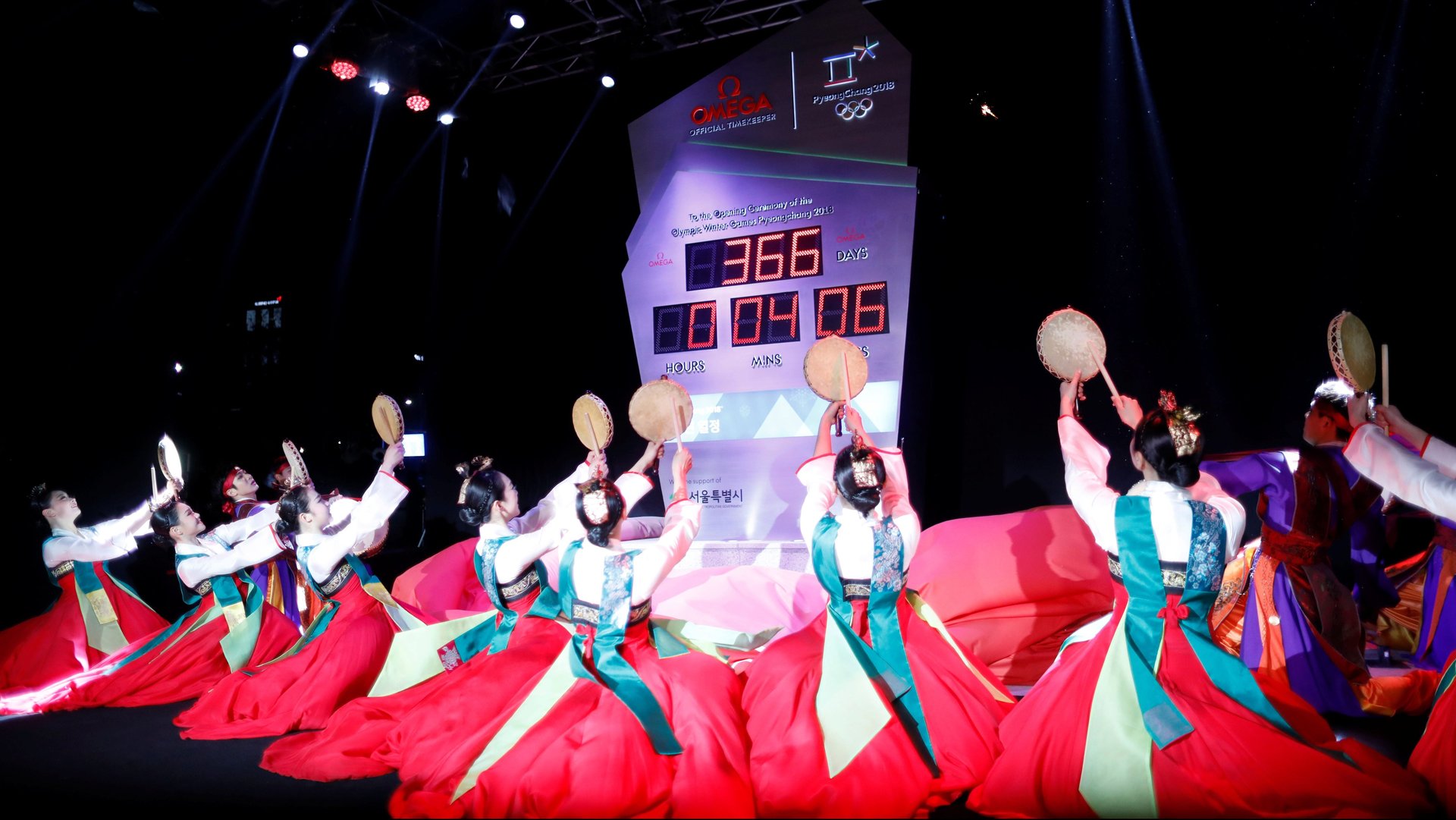North Korea is reunifying its time zone with South Korea’s
During the love fest—er, summit—between South Korea’s president Moon Jae-in and North Korean leader Kim Jong-un last week, the two bantered many times about differences between the two nations, and how they could overcome them. The ultimate dream is to achieve a lasting peace—and perhaps even reunite one day.


During the love fest—er, summit—between South Korea’s president Moon Jae-in and North Korean leader Kim Jong-un last week, the two bantered many times about differences between the two nations, and how they could overcome them. The ultimate dream is to achieve a lasting peace—and perhaps even reunite one day.
“When I was sitting in the waiting room, I saw two clocks on the wall, one of the Seoul time and the other of the Pyongyang time, and I felt bad about it,” Kim was quoted as telling Moon at one point, according to the New York Times (paywall). “Why don’t we reunify our clocks first?”
Apparently, there’s no time like the present. South Korean news agency Yonhap says that North Korea will move up its time by half an hour on Saturday (May 5) to synchronize with its southern neighbor, putting both of them 9 hours ahead of GMT.
Complete reunification, if it ever happens, will be far less simple. As a practical matter, combining a vibrant export-oriented economy that has created world-beating tech companies with an impoverished state-run economy would hardly be easy, even if it has been done before (paywall). And that’s leaving aside other thorny political and social issues around enmeshing the two nations.
Which is why it’s wise to experiment first with feel-good baby steps. While changing a time zone can be a big deal, in North Korea’s case it’s actually going back to the status quo of just three years ago, when it used to be on the same time zone as Seoul and Japan. In 2015, though, North Korea established Pyongyang time, to break with “imperialist” Japan, and revert to the time zone Korea had before Japan occupied it in 1910. South Korea was also once on that time zone, between 1954 and 1961, but more recent proposals to repeat the exercise have been scuttled.
Time zones have often been a way for countries to distinguish themselves from rivals and sworn enemies. For example, the Indian city of Amritsar is 30 minutes ahead of the Pakistan city of Lahore just 30 miles to the west, yet it keeps the same time as Shillong, an Indian city 1,500 miles to the east. South Asia, in general, is a mess of randomness (paywall) when it comes to time zones.
Time has also been a way to express national unity, even when it’s not very practical to do so. China once had five zones—and it probably would suit Urumqi in its far-west Xinjiang region to be on a different time zone than Beijing, and forgo those midnight sunsets—but since 1949, thanks to a decree by Mao Zedong, has only had one.
The clock announcement is one of several to come out of Friday’s dramatic summit, which ended with an agreement to seek a formal end to the Korean War, and a commitment to denuclearize the Korean peninsula. The two countries also agreed to cease confrontational border activities, such as blasting messages at one another.